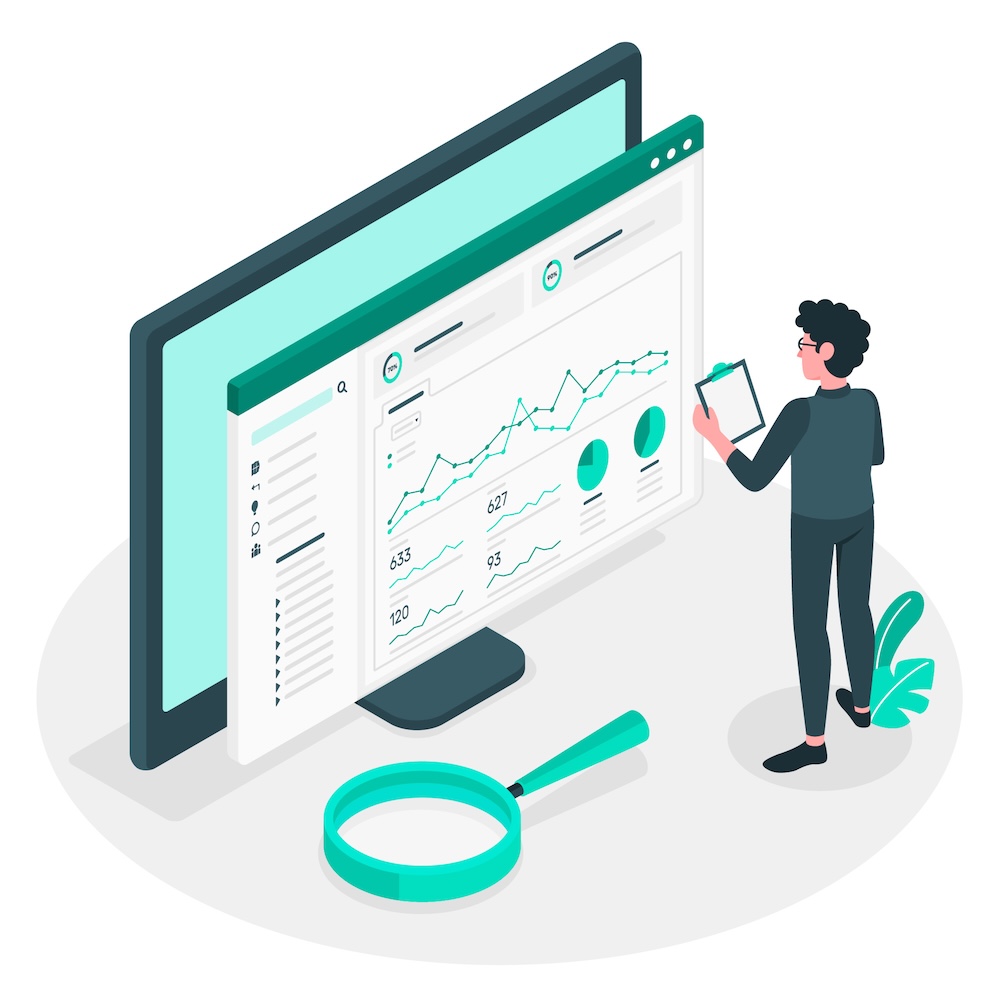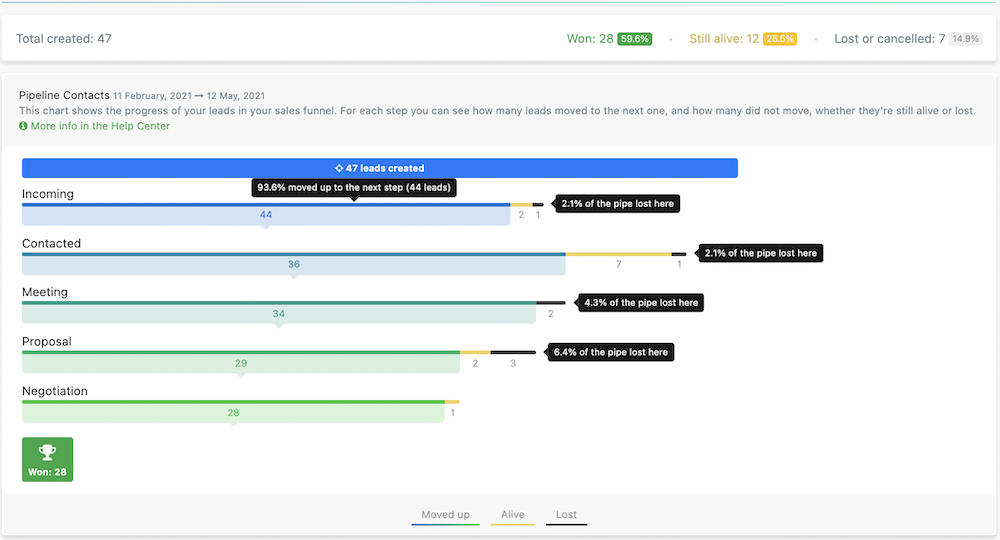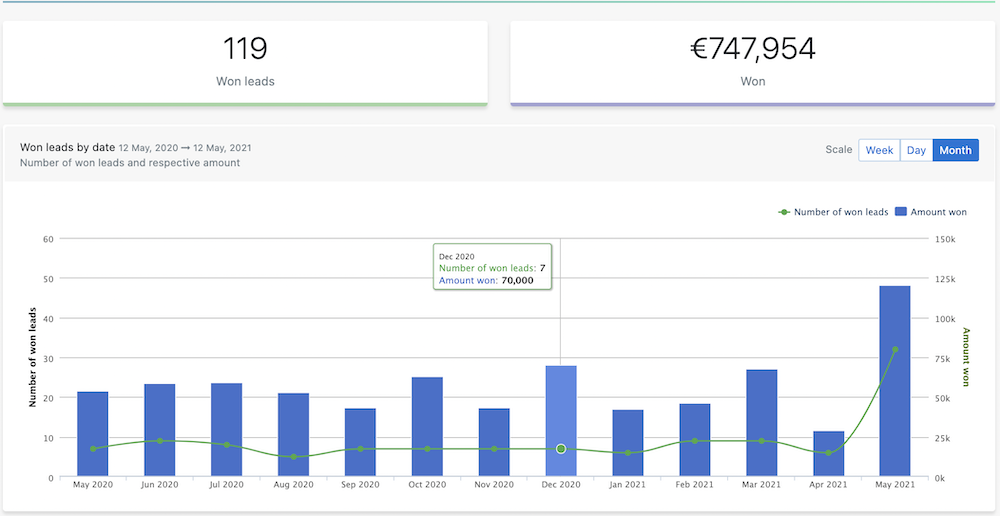
The sheer amount of information in the world has never been greater than it is today. And when it comes to the world of business analytics, that paradigm shift is possibly at its most profoundly affecting.
With such gigantic quantities of data available, forward-thinking businesses have more potential than ever before to gather, analyze, and draw conclusions about their customers, their competitors, and their ideal growth trajectories.
The best results, of course, are those that boost sales growth and increase bottom-line revenue. After all, businesses exist to make money at the end of the day — if you’re not converting, you’re not winning. With so much information available, deep-dive analytics can prove to be an enormous difference-maker when it comes to harnessing the insights hidden in the details and driving long-term sustainable growth.
That doesn’t mean it’s easy to do, though. And when you’re dealing with such an enormous quantity of information, it can be easy to get overwhelmed.
Luckily, there are plenty of tools and techniques out there that businesses can use to make the most out of the data at their fingertips. In the following article, we’ll be taking a look at how analytics can be used to harness raw data and draw insights in order to boost sales performance and ultimately increase revenue.
The Role of Data Analytics in Sales
Understanding Customer Behavior
Customer behavior is at the heart of every business with a product or service to sell. There’s no point having the best offering in the world if you’ve got no idea who’s going to buy it. And if you don’t deeply understand the psychology driving the actions of your ideal customers, you’re going to fall way behind the competitors that do.
Possibly the single most impactful benefit of data analytics is its ability to provide deep insights into customer behavior. By analyzing information from various touchpoints, such as website interactions, social media engagement, and purchase history, businesses can get a clearer picture of what’s actually driving their customers’ decisions.
There’s no room for guesswork in the modern business environment — everything needs to be backed up by facts. Once you understand your customer behavior at a deeper level, you’ll be able to tailor your sales strategies to meet the specific needs and preferences of your customers.
So how does understanding customer behavior lead to concrete, actionable changes you can make to your sales process in order to boost sales and drive growth? Let’s take a look at a few real-world examples.
Identifying Sales Opportunities
One of the major ways analytics can be used in conjunction with customer behavior is by identifying new sales opportunities. This is done by highlighting trends and patterns over time that might not be obvious at first glance, and certainly wouldn’t be obvious without a huge pool of information to draw on.
For example, by examining sales data tracked against different times of the year, an organization can identify seasonal trends in its sales, even if it doesn’t provide a traditionally seasonal product or service. This insight, which might initially sound counterintuitive, could in fact give that organization a killer edge over its competitors because it would be able to adjust its inventory, change its marketing efforts, and implement new strategies to capitalize on those opportunities.
Compared to a competitor who hasn’t considered the seasonal element of their sales trends, the organization with that insight is going to have a major advantage.
Improving Sales Forecasting
Every sales professional is intimately familiar with the concept of sales forecasting. By taking a look at past data, businesses can make remarkably accurate predictions about where the trend is heading in the future, allowing them to shift gears, adjust strategies, and allocate resources accordingly.
Forecasting itself isn’t a new concept, but until recently, it was a lot less accurate. These days, it’s possible to get hyper-specific with your predictions, which are often concrete enough to justify significant shifts in high-level strategy, confident that the results will pan out in the intended direction.
Advanced analytics techniques, such as machine learning, can increase the effectiveness of sales forecasting even further by combining historical data and current market conditions in order to create ultra-accurate models.
And by identifying complex patterns and correlations within the data that simply couldn’t be found with the human eye, they can draw startling conclusions that could make all the difference when it comes to getting that killer sales edge.
Optimizing Pricing Strategies
A huge element of customer behavior is related to price. And when you think about it, it makes sense. Price is often the single biggest point of friction for any purchase process, making it a decisive obstacle to overcome as you work towards a conversion.
There are a number of ways to get it wrong, too. Price your product or service too high, and nobody’s going to buy it; price it too low, and nobody thinks it’s valuable.
Given that it’s such a critical factor in driving sales growth, it’s vital that businesses make pricing decisions based on concrete facts. That’s where data analytics come into play once more. By analyzing competitor pricing, market demand, and customer price sensitivity, dynamic pricing models can be developed.
These models, which are powered at their core by real-time data, allow companies to adjust prices in response to changing market conditions, maximizing revenue and profitability in a way that was unimaginable before the recent technological boom.
Implementing a Data-Driven Sales Strategy
Now that we’ve got a better idea of how data analytics can drive sales growth at a high level, it’s time to look at what’s actually involved in implementing a data-driven sales strategy. The ins-and-outs of your own business’s sales strategy, of course, will vary depending on the technological stack you have available and your goals.
But here are a few actionable steps to keep in mind as you start thinking further about how to best harness the data you have available to you.
Data Collection and Integration
This one’s obvious. The first step in analyzing data at scale is collecting that data in the first place and integrating it into a system you can then reliably work with as you start drawing insights. Typically, this stage involves gathering data from multiple sources, such as customer relationship management (CRM) systems, e-commerce platforms, social media, and third-party data providers.
The data’s no good on its own, though — you won’t be able to do anything with it. In order to truly make the most of the analytical potential, you need to integrate the data you’ve collected into a centralized system. By taking a holistic view of your business and its customers, you’ll get the best of both worlds: a bird’s-eye-view overview as well as the potential for laser-focused detail examination.
Different businesses use different systems, either proprietary or, more commonly nowadays, outsourced to third-party services. The right choice for you is going to be the perfect balance between long-term usability and price point.
Data Quality and Governance
We’re going to let you in on a secret: working with bad data is just as bad, if not worse, than working with no data at all. If the initial pool of information you’re drawing from is flawed, inaccurate, messy, confusing, or just plain wrong, the insights you’re going to be gathering will, naturally, be totally misleading.
So how are you supposed to ensure your data is accurate and reliable enough to effectively integrate data analytics into your broader sales strategy?
The answer lies in a concept known as data quality and governance. The goal here is to maintain the integrity of the data, ensuring it’s as relevant, accurate, and consistent as possible.
There are a number of practices you can employ in order to achieve those goals, with data cleaning and validation being chief among them. But it’s also important to mention that establishing clear ownership and accountability within the organization is a step that can’t be overlooked.
Without a solid hierarchy in place and strict permissions defining who can access and manipulate the data, your business runs the risk of too many chefs ruining the soup, to use the classic culinary proverb.
Choosing the Right Analytics Tools
Now that you’ve got your data collected, cleaned, and governed correctly, it’s time to choose the right tools to help you analyze your potential goldmine. It’s an essential part of the process, and luckily, there’s plenty of choice available, ranging from basic spreadsheet applications to advanced analytics platforms powered by artificial intelligence and machine learning technology.
Ideally, businesses should choose tools that align with their specific needs, budget, and technical capabilities. You don’t want a software setup that’s not capable of handling your data, but you also don’t want to deal with some super-complicated machine learning suite that nobody in your business can figure out how to use. As always, the right answer for your business is going to depend on your unique circumstances.
Focusing on Statistics and Reporting
A major aspect of harnessing data analytics for sales growth is leveraging statistics and reporting tools. Ideally, these features will come packaged in a software program that’s easy to integrate with your CRM — or, as with the case of noCRM, they’re actually a part of the CRM itself.
noCRM’s wide-ranging statistics & reporting feature suite was designed to allow sales reps to get as broad or as granular with their data as they need to be. From high-level overviews of company and team performance to ultra-specific insights into things like lead performance, pipeline performance, and active lead information, you can turn the microscope on every aspect of your sales process without ever having to leave your CRM software.
Intuitive team activity dashboards display every action that your team is taking, including how many leads were created and what types of activities were logged, making it easy to keep your finger on the pulse at all times. noCRM also helps you forecast more effectively, drawing on the entire wealth of data at your disposal in order to make the kind of accurate, future-proof predictions that drive better business decisions.
You can even analyze the quality of the prospects on your lead list and your team’s qualification performance in order to better optimize the early stages of your funnel, boosting productivity and reducing the chance of valuable resources being wasted on poor-quality leads. If you’d like to get more detail about the statistics and reporting features noCRM provides, feel free to check out this link, where you’ll see all the major points broken down into more detail.



Harnessing the power of data through analytics is a game-changer for driving sales growth. In today’s fast-paced business environment, if you’re not playing the data game, you’re falling behind your competitors who are. Whether it’s understanding customer behavior, identifying sales opportunities, improving forecasting, or optimizing certain marketing strategies, the list of ways you can improve your team’s performance is limited only by your imagination.
In order to truly exploit the transformative power of data analytics, however, it’s vital that you’re working with the right software. noCRM is an intuitive, ultra-flexible CRM designed for reps and teams who want to close more deals and waste less time. And when it comes to data, the extensive suite of statistics and reporting features provides that killer edge every modern sales team is looking for.
If you’ve been looking for a high-powered CRM that’s straightforward to get started with, versatile enough to integrate with dozens of tools, and equipped with all the analytics features you need to truly make the most of your data, why not give noCRM a try? You can start a free, no-commitment trial of the software today — just click here to start your journey and see the noCRM difference for yourself.


